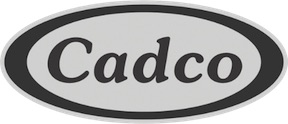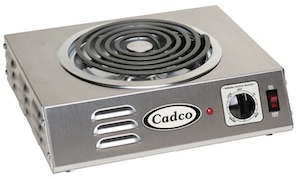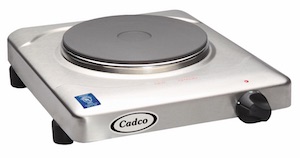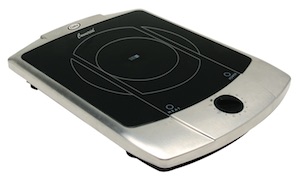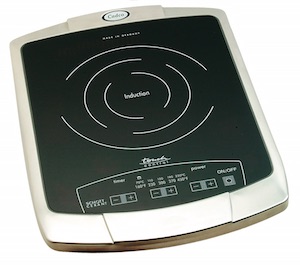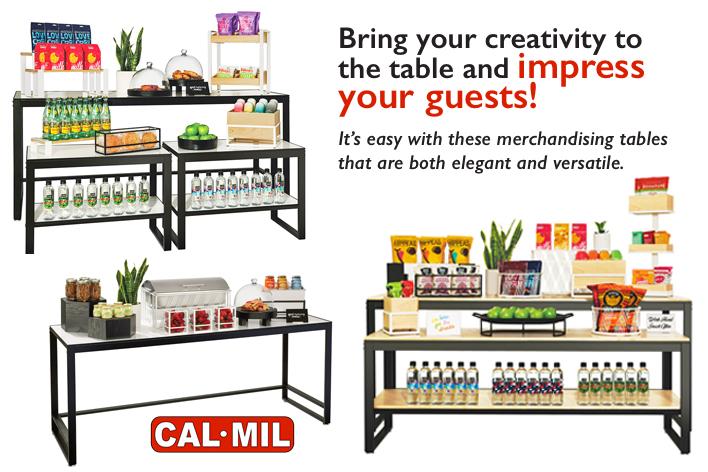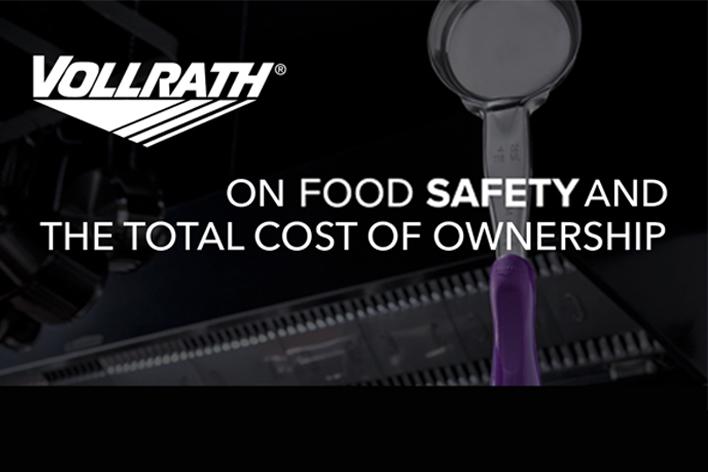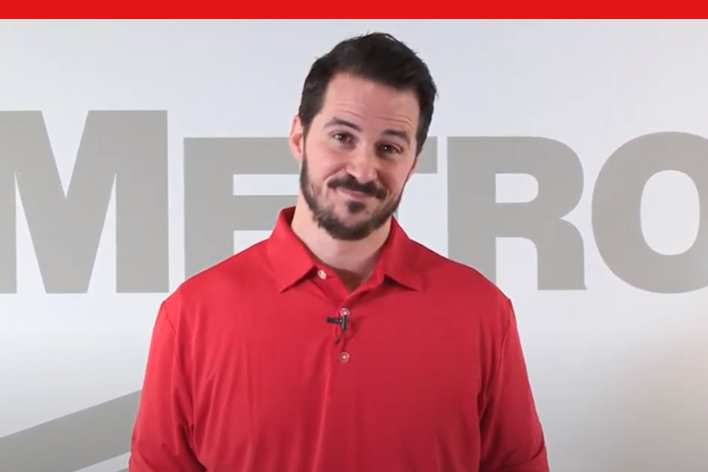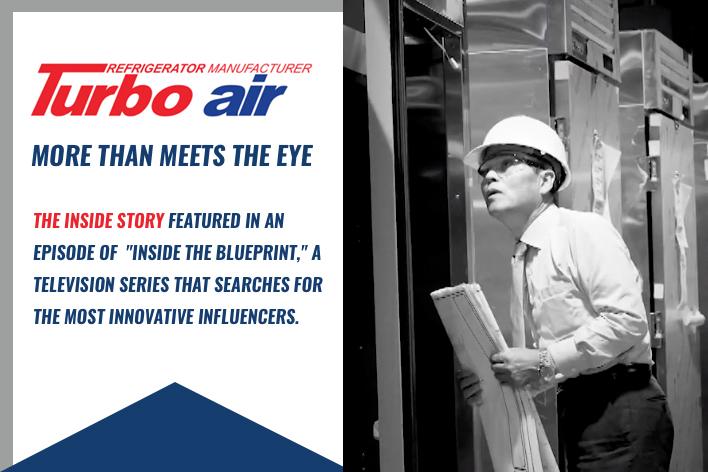By Lee Davis, CFSP
Electric hotplates can be the ideal solution for many problems. Do you need:
- An additional burner behind the line?
- A cooking surface in the prep area, bakery, or service station?
- A flame free burner for a front-of-house omelet, sauté, or dessert station?
- A burner to keep sauces, soups, or toppings warm at a buffet?
- A portable electric cooking surface for a catered event?
- A burner to keep hot cider warm at the bar?
The right hotplate can do all that, and more, with ease.
What isn’t easy, is figuring out which one is the best choice for you. There are four basic types, but it’s not always clear what differentiates one from another. I did some research, and went to Cadco for help. Chef Christopher Kasik, Culinary Manager, and Erin Shanahan, Marketing Manager, gave me some guidance and information about choosing a hotplate.[vc_accordion style="toggle_with_icon"][vc_accordion_tab title="1. Tubular or Coil Hotplate"]
This is the single or double burner version of your mother’s (or grandmother’s) electric stove. They are affordable and familiar for most users. Indirect heat disperses throughout the bottom of the pan. Heat-up and cool-down are typically slower, but predictable. This hotplate is not as easy to clean as some of the alternatives, and it is not as attractive for front-of-the-house applications. It is the value option.
Recommended applications:
- Chocolate work
- Achieving a simmer
- “Holding” applications w/ items such as soups, sauces & bisques
- Sous vide cooking
- Low heat and occasional, or one time use for a special event
See Cadco Models: CSR-1T, CSR-3T, CDR-1T, CDR-1TFB, & CDR-2TFB[/vc_accordion_tab][vc_accordion_tab title="2. Cast Iron/Solid Model Hot Plates (French Style)"]
These also come in single or double burner, with a solid flat heating surface made of cast iron (or sometimes stainless steel) that is sealed from leaks and spills. They provide concentrated direct heat to the entire bottom of the pan. Because the surface is solid, they are easier to clean and look more professional for front-of-the-house applications. They are typically priced higher than Tubular Hotplates, but are considered the rugged choice.
Recommended Applications:
- Searing
- Sautéing
- Omelet stations
- Rolling boil
- High heat and frequent use
See Cadco Models: KR-1, KR-S2, CSR-1CH, LKR-220, CDR-2C, DKR-S2, & CDR-2CFB[/vc_accordion_tab][vc_accordion_tab title="3. Glass Ceramic Hotplate"]
These radiate infrared energy from a heating coil, through the glass ceramic surface, and into the pot. The glass ceramic surface provides some direct heat, but stays much cooler than the cooking vessel. This is safer for front-of-the-house applications, and minimizes burn risks for employees in the kitchen. They heat up fast, cool down fast, and cook evenly. The price point is higher, but these units are easy to clean, and with sleek, low profile styling, look great in front-of-the-house applications. Most feature a single burner only.
Recommended applications:
- Buffet stations
- Searing
- Sautéing
See Cadco Model: PHR-1C[/vc_accordion_tab][vc_accordion_tab title="4. Induction Hotplate"]
These use electromagnetic energy to heat up the metal in the pots and pans themselves. Heat-up is instant, and cool-down is fast. The cooking surface remains cool to the touch at all times. Cleaning is very easy. They are the safest choice for front-of-the-house applications. They can be set to hold foods within a very narrow range of temperatures, and respond very quickly to any change in the settings. The technology is very energy efficient, so although Induction Hotplates may involve a larger initial investment, they can help you save energy dollars over time. Induction Hotplates also require the use of cookware that is labeled “induction ready” or made of cast iron, enameled steel, or stainless steel.
Recommended applications:
- Quick service turnaround
- Searing
- Sautéing
- Omelet/buffet & action stations
- Rolling boil
- Sous vide cooking
See Cadco Model: BIR-1C[/vc_accordion_tab][/vc_accordion]
A few final considerations when shopping for a hotplate. When comparing one model or brand to another, check the wattage per burner. More wattage, for the same type of hotplate, usually means more heat and faster heat-up. Also, check for other features you may like, including:
- Number of temperature settings
- Digital controls
- Timer
- Automatic shut-off
- Separate on/off switch
- Size of the cooking surface
- Cord length
- Non-skid feet
- Carrying case (if meant for catering events)
- Safety lock
- Warranty
Click here to get more information on all of Cadco's Hotplates.

